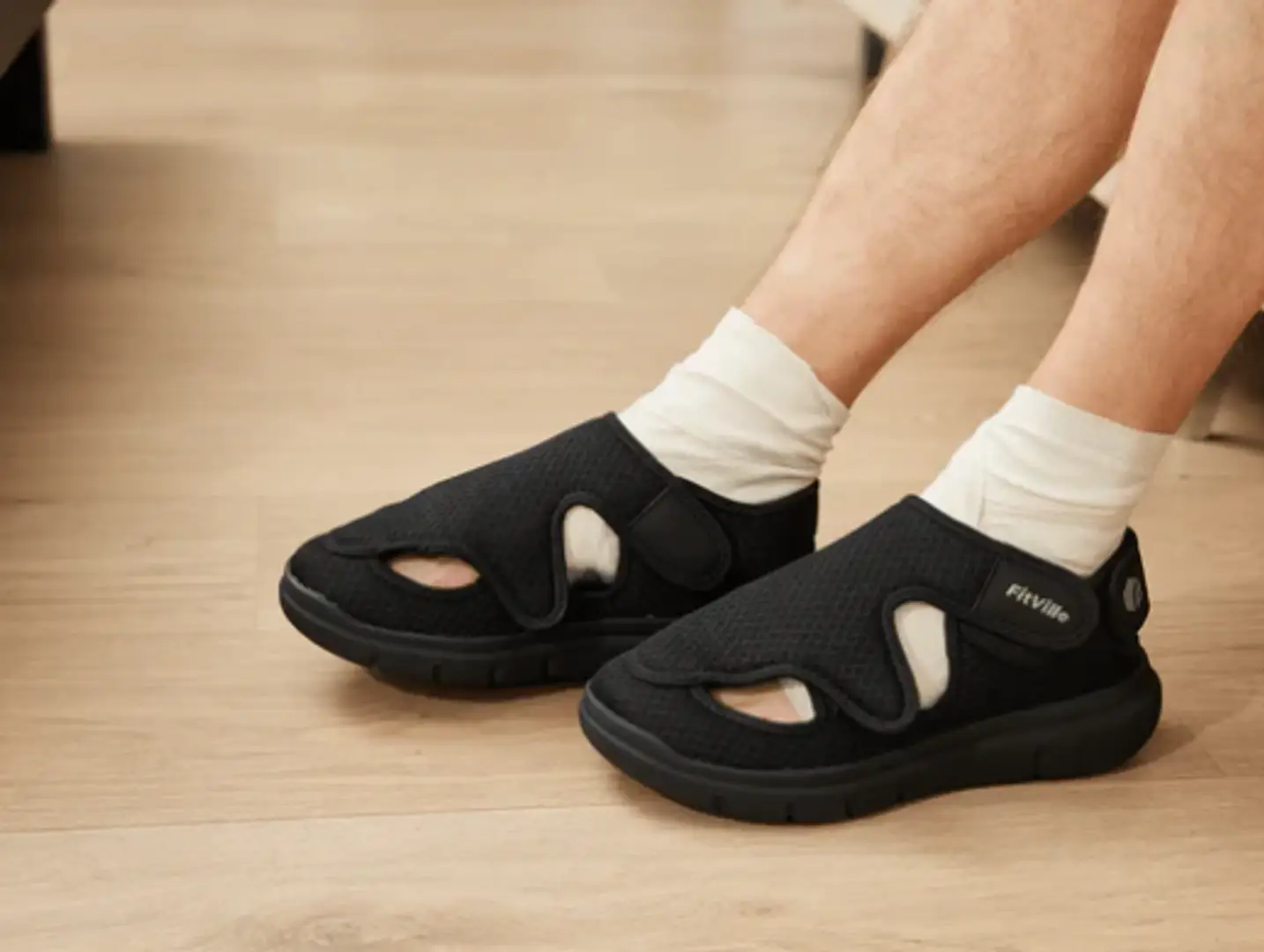

Diabetic Footwear for Men: The Ultimate Guide to Comfort and Protection
Living with diabetes requires more than just monitoring blood sugar levels—it also means taking extra care of your feet. That’s why diabetic footwear for men is more than a comfort choice—it’s a health necessity.
In this post, we’ll explore why diabetic footwear for men matter, what features to look for, and which brands are trusted for offering relief, protection, and all-day support.
Why Diabetic Footwear Matters
Diabetes can lead to neuropathy (nerve damage) and circulatory issues, especially in the lower legs and feet. These conditions make men more vulnerable to foot injuries, infections, and ulcers—often without feeling any pain or discomfort.
Without proper care, even minor injuries can escalate. That’s why investing in diabetic shoes is critical. These shoes are designed to prevent problems before they start, offering both comfort and medical-grade protection.
Key Features of Diabetic Footwear for Men
When choosing diabetic shoes, look for features that prioritize foot health and reduce risk:
✅ Extra Width & Depth
Many diabetic men experience swelling or foot deformities (like bunions or hammertoes). Diabetic shoes often come in wide (2E), extra wide (4E), or XX-wide (6E) sizes, with extra room to accommodate insoles or bandages.
✅ Seam-Free Interiors
To prevent friction and skin irritation, diabetic footwear typically features smooth, seamless linings—crucial for sensitive or numb feet.
✅ Cushioned Insoles with Arch Support
Proper arch support reduces pressure points, improves alignment, and distributes weight evenly. Many diabetic shoes include removable insoles for orthotic use.
✅ Shock-Absorbing Soles
The best diabetic shoes feature EVA, gel, or PU midsoles to soften impact and protect feet from jarring steps, especially on pavement or hard floors.
✅ Easy-On Designs
Men with mobility issues or swollen feet benefit from Velcro straps, stretchable uppers, or wide openings for easy on/off.
✅ Non-Slip Outsoles
Traction is key for fall prevention. Diabetic shoes often include textured rubber soles to reduce the risk of slipping—especially in wet or uneven environments.
Best Diabetic Shoes for Men (2025)
Here are some of the top-rated, podiatrist-recommended options for men living with diabetes:
🔹 FitVille EasyTop StrapEase Diabetic Shoes
Widths: Up to 6E
Best For: Swollen feet, high insteps, arthritis
Features: Adjustable Velcro straps, U-shaped heel cup, memory foam insoles, and non-slip rubber outsole. Breathable mesh and PU upper for all-day comfort.
🔹 Orthofeet Edgewater Stretch
Widths: Medium to XX-Wide (up to 6E)
Best For: Neuropathy, bunions, plantar fasciitis
Features: Stretchable knit upper, ergonomic arch support, extra depth design, and diabetic certification.
🔹 Dr. Comfort William-X
Widths: Wide to Extra-Wide
Best For: Everyday wear and dress settings
Features: Leather upper, hook-and-loop closure, protective toe box, and firm heel counter for added stability.
🔹 Propet Stability X Strap
Widths: Up to 5E
Best For: Active walking or work environments
Features: Medicare-approved, full-grain leather upper, removable orthotics, and padded collar for ankle support.
🔹 FitVille Wings V2 Diabetic Shoes
Widths: 2E, 4E, 6E
Best For: Diabetic men seeking style + support
Features: Breathable mesh/spandex upper, dual-density EVA midsole, heel ring for stability, and OrthoLite® insoles.
Medicare & Diabetic Footwear Coverage
Did you know? If you qualify for Medicare and have a prescription from a podiatrist, you may be eligible for one pair of diabetic shoes and three pairs of insoles each year under the Therapeutic Shoe Bill.
To qualify:
You must be diagnosed with diabetes.
You must have one or more of the following foot conditions:
Poor circulation
Foot deformity
Peripheral neuropathy with callus formation
History of foot ulceration or amputation
Your doctor must prescribe the shoes, and a podiatrist or qualified provider must fit them.
Additional Foot Care Tips for Diabetic Men
Even with the best shoes, daily foot care is essential. Follow these steps:
Inspect your feet daily for cuts, blisters, or redness.
Wash and dry feet thoroughly, especially between toes.
Moisturize to prevent cracking—but avoid between the toes.
Trim nails carefully, or see a foot specialist.
Wear socks made for diabetics, which are seamless and moisture-wicking.
Never go barefoot, even at home.
Final Thoughts: Step Into Health With the Right Shoes
The right diabetic footwear for men isn’t just about comfort—it’s about preventing serious foot complications and improving daily quality of life. Whether you’re looking for a slip-on for swollen feet, a cushioned walking shoe, or a stylish option that doesn’t scream “medical,” there’s a diabetic shoe built to support your every step.
Always consult with your podiatrist or diabetes care team before choosing new footwear, especially if you’ve had previous foot injuries.
Related Posts
© 2025 Invastor. All Rights Reserved

User Comments